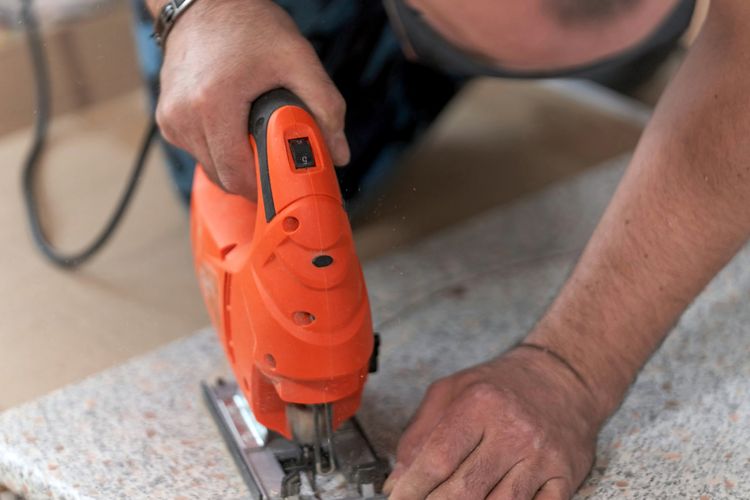If you would like to begin performing DIY woodworking projects around your home, such as building garage shelves or building a new wooden toy box for your child, then you need to learn all about the jigsaw. A jigsaw is one of the most versatile saws used in woodworking and can be used to complete virtually any woodworking task.
In addition, jigsaws are considered safer for novice woodworkers to use than many other types of saws due to their large, flat bases that surround their blades. These bases form a barrier around the saw blades to keep accidental cuts to a minimum. However, you should always wear safety goggles and a dust mask when operating one of these saws, just as you would when using any other type of saw to cut wood.
Read on to learn more about the versatile jigsaw and how to choose the right saw blade for the woodworking task at hand.
Jigsaw Uses
Jigsaws are relatively small and portable and can be used to create a variety of cuts in wood, including both straight and curved cuts. However, jigsaws are best known for being able to create small, intricate wood cuts, such as wood cutouts, that would be very difficult to impossible to create with other saw types. These saws can also create bevel cuts.
While long, straight cuts can be performed more quickly with other saw types, you can make these cuts with a jigsaw that is equipped with a guide bearing and one or two clamped-down straight edge guide(s). This bearing keeps the saw blade from vibrating during the cutting process, and the straight edge guide(s) help you move the saw in a very straight line.
Many jigsaw attachments can also help you create perfect cuts. For example, to create perfect circle cutouts, add a circle-cutting jig to your saw. This jig consists of a metal fastener attached to a metal arm. Attach the metal fastener to the center of your desired circle cut out and adjust the arm to your desired circle radius. Then, move the saw in a circular motion, taking care to keep the jig arm flat to cut the circle.
Jigsaw Limitations
Jigsaws do have their limitations. The average jigsaw is only powerful enough to cut through softwood that is about 1 1/2 inches in thickness and hardwood that is about 3/4 inch thick before the blade begins to bend. Choose a larger saw for projects that require thicker wood.
In addition, when completing a woodworking project that requires many straight, long cuts, a circular saw is a better saw option. This saw creates these cuts quickly and easily without the need for special straight edge guides that can be time-consuming to move from one wood section to another.
Jigsaw Blades
You can purchase a variety of jigsaw blades designed to perform specific woodworking tasks.
For cutting softwood, you should choose blades made from high carbon steel (HCS). High-speed steel (HSS) blades are best for cutting hardwoods.
There are two main types of jigsaw blade teeth: milled and ground teeth. Milled teeth are less sharp, so they cut wood more quickly but leave rougher edges behind. Ground teeth are very sharp, so they make very smooth cuts.
Ground teeth typically work best for most woodworking projects. However, when you find a project very time-consuming and do not mind having to sand rough wood edges after cutting, choose a blade with milled teeth to complete the cutting process more quickly.
Jigsaw blades also come with a various number of teeth per inch (TPI). Blades with a lower TPI make rougher cuts than blades with higher TPIs. When cutting wood, home improvement expert Bob Vila recommends using blades with 8 to 10 TPI.
If you would like to begin the hobby of woodworking, then keep these jigsaw facts in mind when building your woodworking tool kit. Contact West Equipment Co. Inc. to discuss all of your woodworking tool needs.





